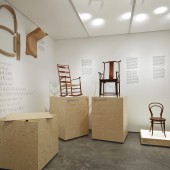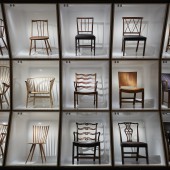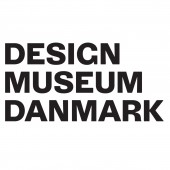The Danish Chair Exhibition by Designmuseum Danmark |
Home > Winners > #64945 |
 |
|
||||
| DESIGN DETAILS | |||||
| DESIGN NAME: The Danish Chair PRIMARY FUNCTION: Exhibition INSPIRATION: For many years, Designmuseum Danmark had wanted to display some of its enormous stored collection of chairs as part of its permanent exhibition. To tell the story of Danish design through the chair. The museum asked the designer Boris Berlin to come up with a solution that showed a representative range of the collection. It was important to create a different space of curiosity and reflection. UNIQUE PROPERTIES / PROJECT DESCRIPTION: The Danish Chair is a wunderkammer of chairs. In the exhibition, Designmuseum Danmark tells the story of how Danish design turned into an international mega-brand. Guests can embark on a scenic journey of the many types of chairs, which draw a picture of the 20th-century Danish success story and export adventure known as Danish Modern. OPERATION / FLOW / INTERACTION: Visitors enter the exhibition at the intro room, where the typology of chairs is explained. Then passing through the strip curtain, the visitors enter the tunnel. The light is dimmed, chairs stand in their translucent boxes lit diffusely from behind. The chairs are sleeping, and the visitor has the sense of entering the archives. The lights progressively come on and the chairs wake up, before falling back to sleep as visitors move. There is also the sliding panels with info. PROJECT DURATION AND LOCATION: The exhibition opened in December 2016 and is a permanent exhibition at Designmuseum Danmark. FITS BEST INTO CATEGORY: Interior Space and Exhibition Design |
PRODUCTION / REALIZATION TECHNOLOGY: The black netting textile ceiling conceals all electric communications. All electric cables and three rows of LED light tubes are mounted on the steel structure, hidden behind the back wall of the display box, creating the diffused dimmed background light. In each display box are mounted two adjustable spots that ensure the right light set up for each chair. These spotlights are being switched on by the movement sensors. Between the boxes is mounted vertical drawer with an information panel. SPECIFICATIONS / TECHNICAL PROPERTIES: 110 vacuum-formed in translucent white acrylic boxes HXWXD 117X110X950 cm, framed with ash profiles, are mounted on three levels into the structure made of rectangular steel profiles. This 2x25 m long structure on both sides of the museums gallery is connected under the ceiling in one big construction that stays independently in the protected historical building without touching its walls and ceiling, just staying on the original museums marble floor. TAGS: Danishdesign, DesignmuseumDanmark, TheDanishchair, IskosBerlin, design, chair RESEARCH ABSTRACT: Research of the relation between visitors and the museum. An appointed group of museums scientific experts and communication experts together with exhibit designer performed a comprehensive survey of European museums. The interdisciplinary group developed the general idea of the exhibition, its cultural and design historical message. A script of the total experience, engaging all senses of the visitor and provoking the active, even physical interaction between guest and the exhibition and the exhibit was created. CHALLENGE: How to create the participative museums ambience, where do not touch is the obligatory condition. How to achieve an interaction in the analog exhibition environment. How to serve visitors the enormous quantity of concentrated information, without overfeeding. How to display the exhibited design masterpieces, not compromising the experience of wholeness. How to implement exhibition architecture in the frames of a protected historical building. ADDED DATE: 2018-02-23 13:17:52 TEAM MEMBERS (2) : Exhibition Designer: Boris Berlin, Iskos-Berlin Design and Graphic design: Rasmus Koch Studio IMAGE CREDITS: Image #1: Designmuseum Danmark, 2016 Image #2: Designmuseum Danmark, 2016 Image #3: Designmuseum Danmark, 2016 Image #4: Designmuseum Danmark, 2016 Image #5: Designmuseum Danmark, 2016 |
||||
| Visit the following page to learn more: http://designmuseum.dk | |||||
| AWARD DETAILS | |
 |
The Danish Chair Exhibition by Designmuseum Danmark is Winner in Interior Space and Exhibition Design Category, 2017 - 2018.· Press Members: Login or Register to request an exclusive interview with Designmuseum Danmark. · Click here to register inorder to view the profile and other works by Designmuseum Danmark. |
| SOCIAL |
| + Add to Likes / Favorites | Send to My Email | Comment | Testimonials | View Press-Release | Press Kit |







